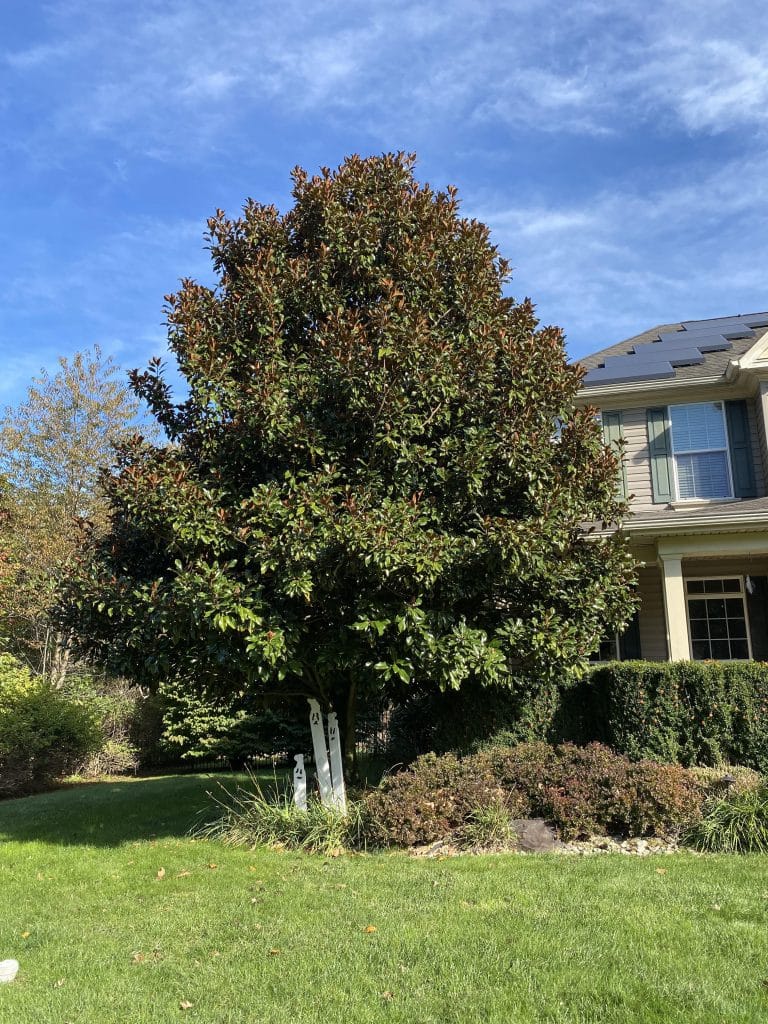Magnolia trees, known for their stunning beauty and fragrant blooms, are elegant fixtures in a variety of landscapes. These Magnoliaceae trees have large, glossy leaves and exquisite, often fragrant flowers that captivate with their variety of colors. Magnolias, which have been around for centuries, represent purity and perseverance. Their vigorous growth patterns, which occur primarily in the spring and summer, make them a popular addition to gardens and parks alike. Aside from their aesthetic value, magnolia trees require careful attention and care to thrive, ensuring their enduring allure in nature’s tapestry. Read full artical to learn When to trim magnolia tree.
Understanding the Growth Cycle of Magnolia Trees
The growth cycle of magnolia trees is divided into distinct phases, each of which contributes to their overall beauty. Spring heralds the magnolia’s grand entrance, as buds burst into an array of vibrant flowers ranging from creamy white to pink, purple, or yellow hues. These fragrant and large blossoms adorn the tree’s branches, captivating passers-by. Following this spectacular display, the tree enters a period of vigorous growth during the summer and fall. Lush, glossy foliage emerges, providing an elegant backdrop to the garden landscape. Throughout these seasons, magnolia trees grow rapidly, establishing their resilience and adaptability to a variety of climates. Understanding these growth stages is critical in determining the tree’s care and maintenance, ensuring it thrives and continues to enchant with its natural beauty year after year.
Importance of Trimming Magnolia Trees
Trimming or pruning magnolia trees holds significant importance in maintaining their health, aesthetics, and structural integrity. This practice isn’t merely for appearance but also promotes the tree’s overall well-being. Regular trimming helps in eliminating dead, diseased, or crossing branches, preventing potential hazards and enhancing the tree’s structural strength. By removing these problematic branches, proper air circulation and sunlight penetration are facilitated, crucial for the tree’s growth and vitality. Moreover, strategic trimming encourages new growth, leading to a fuller canopy and more abundant blossoms during the flowering season. It also aids in preserving the natural shape of the tree, contributing to its visual appeal in the landscape. Overall, the thoughtful and periodic trimming of magnolia trees plays a pivotal role in ensuring their longevity, health, and enduring charm in the outdoor environment.
When to Trim Magnolia Trees?
It is critical to determine the best time to trim magnolia trees in order to promote their health and reduce stress. The best time to prune these majestic trees is in late winter or early spring, preferably before new growth begins. This period of dormancy allows for faster healing and reduces the risk of sap loss. Trimming during this stage promotes vigorous growth when the growing season begins. Furthermore, avoiding pruning during the blooming season is critical because it may reduce the number of blossoms the following year. Crossing branches, deadwood, and overgrowth are all indicators that trimming is required. Following this seasonal schedule ensures that the magnolia tree thrives, preserving its structural integrity, health, and aesthetic appeal while minimizing any potential negative effects on its growth or flowering cycles.
How to Properly Trim a Magnolia Tree
To preserve the health and appearance of a magnolia tree, trimming it requires a methodical approach. Begin by gathering the necessary tools, such as pruning shears, loppers, and a pruning saw. Begin by removing any dead, damaged, or diseased branches, making clean cuts just outside the branch collar to promote healing. Cutting flush against the trunk may hinder the tree’s recovery.
Next, address any branches that are crossing or rubbing to improve airflow and prevent future damage. To reduce stress, maintain the tree’s natural shape and avoid excessive pruning. Trim back overgrown areas selectively to avoid compromising the tree’s structural balance.
Finally, take a step back from time to time to inspect the tree’s appearance and ensure symmetry. Pruning magnolia trees should be done with caution and moderation because they are sensitive to over-pruning. Following these steps ensures proper care and maintenance, promoting the health, longevity, and allure of the magnolia in any landscape.
Common Mistakes to Avoid When Trimming Magnolia Trees
Several common mistakes should be avoided when trimming magnolia trees to protect their health and appearance. Over-pruning is one of the most common mistakes, as excessive cutting can stress the tree and impede its growth. It’s critical to find a happy medium and avoid removing more than a quarter of the tree’s branches in a single session.
Improper cutting techniques, such as making rough or jagged cuts, can impede healing while also inviting diseases or pests. Trimming at the wrong time of year, especially during the blooming season, can reduce the tree’s floral display the following year.
Furthermore, failing to use sanitized tools can spread diseases among trees, negatively impacting their overall health. Furthermore, pruning too close to the trunk or leaving stubs after cutting can stymie the healing process of the tree.
Avoiding these common trimming mistakes protects the magnolia tree’s health, promotes healthy growth, and preserves its natural beauty for future seasons.
Benefits of Regularly Trimming Magnolia Trees
Trimming magnolia trees on a regular basis provides numerous benefits that contribute to their overall health, aesthetics, and longevity. For starters, consistent pruning promotes a stronger tree structure by removing weak, diseased, or crossing branches, lowering the risk of damage from falling limbs, and increasing the tree’s resilience in the face of adverse weather conditions.
Furthermore, proper trimming promotes new growth, resulting in a fuller canopy and more abundant flowering during the blooming season. It also improves air circulation and sunlight penetration throughout the tree, which is necessary for its overall vigor and health. Regular maintenance helps to preserve the natural shape of the magnolia, enhancing its visual appeal in the landscape. Trimming reduces disease risks by preventing the accumulation of deadwood and controlling overgrowth, ensuring the tree remains healthy and vibrant. Finally, diligent and regular magnolia tree trimming contributes significantly to their beauty, structural integrity, and long-term well-being in garden or park settings.
FAQS
1. When is the ideal time of year to prune a magnolia tree?
Trimming a magnolia tree is best done after it has finished blooming, which is usually in late spring or early summer. Pruning in late summer or fall may interfere with the next season’s flowers.
2. How frequently should I prune my magnolia tree?
Magnolia trees require little trimming in general. Remove dead or broken branches on a regular basis, and if required, do substantial pruning every few years to shape the tree.
3. Is it possible to trim a magnolia tree in the winter?
Winter pruning should be limited to particular concerns such as eliminating dead or diseased branches. To avoid tree damage, avoid excessive trimming during this season.
4. Will trimming affect the flowering of a magnolia tree?
Improper or excessive trimming can have an impact on the flowering of a magnolia tree. Pruning at the incorrect time or too forcefully may result in fewer blossoms the next season.
5. How can I promote healthy growth following pruning?
Water, fertilize (if necessary), and provide ample sunshine after trimming to maintain healthy growth and future blooms.
Conclusion
Finally, trimming magnolia trees at the proper times and with the proper techniques is critical to their health and visual appeal. Understanding the growth cycle, recognizing warning signs that indicate the need for trimming, and avoiding common mistakes during the process are all critical considerations. Regular and thoughtful pruning not only preserves the structural integrity of the tree but also promotes healthy growth, abundant flowering, and disease resistance. By committing to a consistent trimming regimen, one can ensure that these magnificent trees thrive and continue to enchant with their beauty and fragrance in any landscape for years to come.




